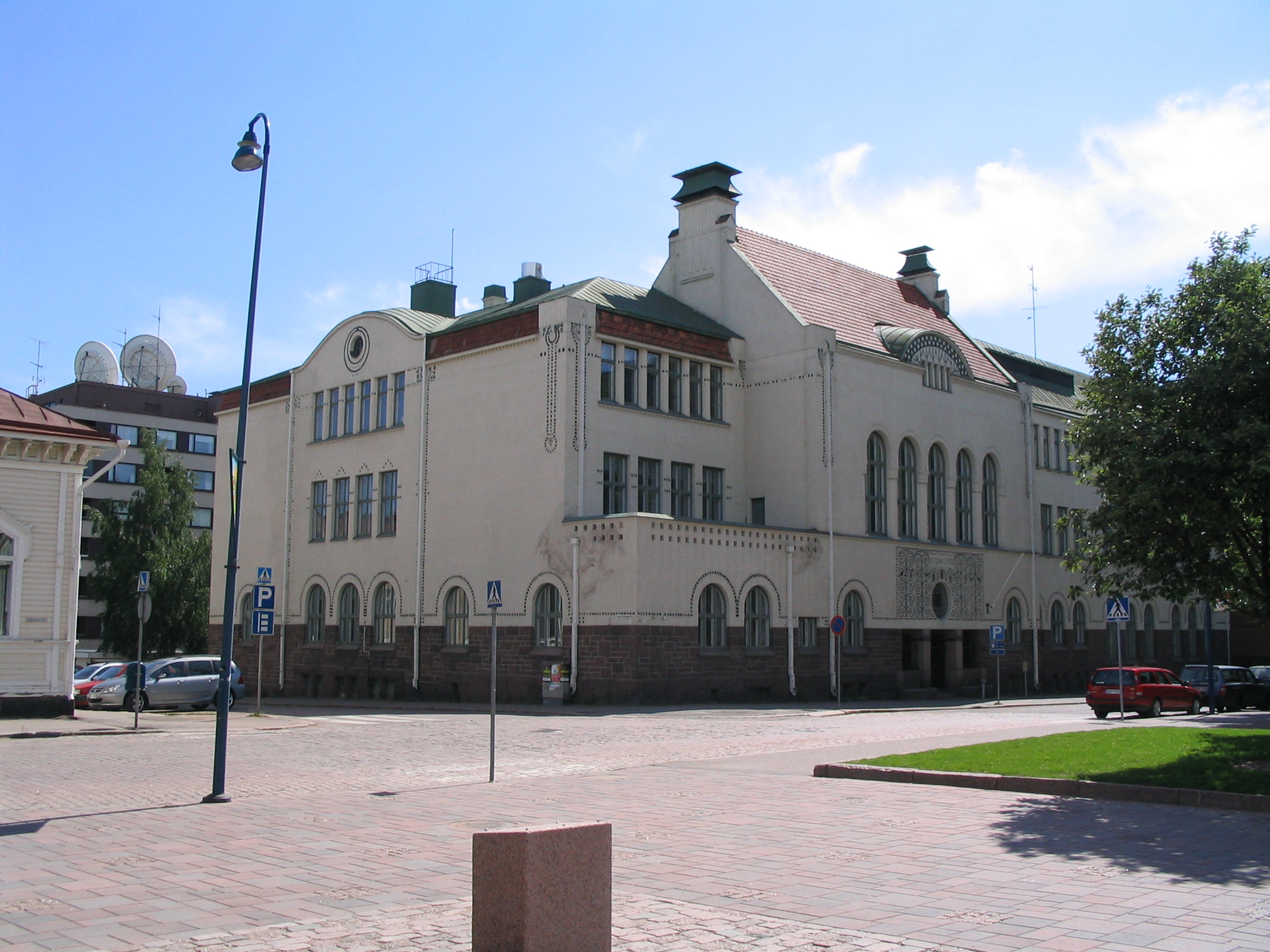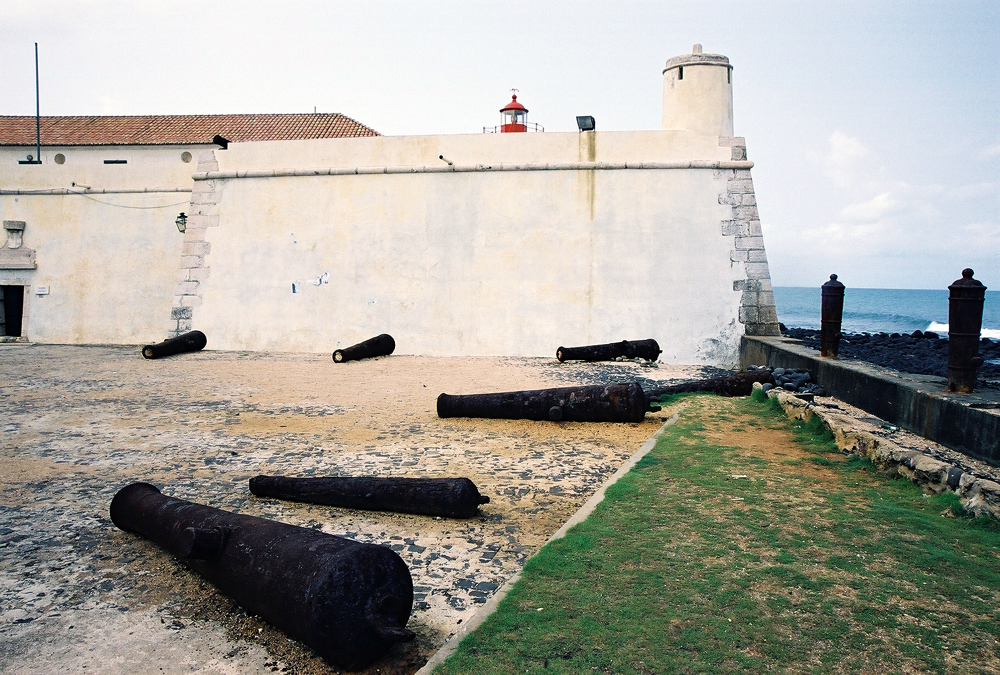|
National Lyceum (São Tomé And Príncipe)
National Lyceum (''Liceu Nacional'') is a lyceum (secondary school) located at Avenida Marginal 12 Julho in the city of São Tomé, São Tomé and Príncipe. It is one of the oldest secondary schools in the nation. It currently has an estimate of 6,000 students. The lyceum is located on the seafront, east of the city centre. The lyceum was opened on 6 October 1969 as a technical school, ''Escola Técnica Silva e Cunha''. The building was designed by architect Mário de Oliveira, who was also responsible for the 1962 urbanisation plan for São Tomé. It became a ''liceu'' after independence. For 36 years, until 2011, it was the only high school in the country. Notable alumni *Tomé Vera Cruz, Prime Minister of São Tomé and Príncipe from 2006-2008, class of 1975 See also *List of buildings and structures in São Tomé and Príncipe References {{DEFAULTSORT:National Lyceum (Sao Tome and Principe) Buildings and structures in São Tomé Schools in São Tomé and Prínci ... [...More Info...] [...Related Items...] OR: [Wikipedia] [Google] [Baidu] |
São Tomé
São Tomé is the capital and largest city of the Central African island country of São Tomé and Príncipe. Its name is Portuguese for " Saint Thomas". Founded in the 15th century, it is one of Africa's oldest colonial cities. History Álvaro Caminha founded the colony of São Tomé in 1493. The Portuguese came to São Tomé in search of land to grow sugarcane. The island was uninhabited before the arrival of the Portuguese sometime around 1470. São Tomé, situated about north of the equator, had a climate wet enough to grow sugarcane in wild abundance. In 1497, 2,000 Jewish children, eight years old and under, were kidnapped from the Iberian peninsula, and forcefully converted to receive catholic education, following the national policy of conversion to Catholicism. The nearby African Kingdom of Kongo eventually became a source of slave labor as well. The island of São Tomé was the main center of sugar production in the sixteenth century; it was overtaken by Brazil b ... [...More Info...] [...Related Items...] OR: [Wikipedia] [Google] [Baidu] |
São Tomé And Príncipe
São Tomé and Príncipe, officially the Democratic Republic of São Tomé and Príncipe, is an island country in the Gulf of Guinea, off the western equatorial coast of Central Africa. It consists of two archipelagos around the two main islands of São Tomé and Príncipe, about apart and about off the northwestern coast of Gabon. With a population of 201,800 (2018 official estimate),Instituto Nacional de Estadística de São Tomé e Príncipe, as of 13 May 2018. São Tomé and Príncipe is the second-smallest and second-least populous African sovereign state after Seychelles. The islands were uninhabited until Portuguese explorers João de Santarém and Pedro Escobar became the first Europeans to discover them in 1470. Gradually colonized and settled throughout the 16th century, they collectively served as a vital commercial and trade centre for the Atlantic slave trade. The rich volcanic soil and proximity to the equator made São Tomé and Príncipe ideal for sugar ... [...More Info...] [...Related Items...] OR: [Wikipedia] [Google] [Baidu] |
Lyceum
The lyceum is a category of educational institution defined within the education system of many countries, mainly in Europe. The definition varies among countries; usually it is a type of secondary school. Basic science and some introduction to specific professions are generally taught. History ''Lyceum'' is a Latin rendering of the Ancient Greek (), the name of a ''gymnasium (ancient Greece), gymnasium'' in Classical Athens dedicated to Apollo Lyceus. Lyceum (classical), This original lyceum is remembered as the location of the peripatetic school of Aristotle. Some countries derive the name for their modern schools from the Latin but use the Greek name for the ancient school: for example, Dutch has (ancient) and (modern), both rendered ''lyceum'' in English (note that in classical Latin the ''C'' in was always pronounced as a ''K'', not a soft ''C'', as in modern English). The name ''lycée'' was retrieved and utilized by Napoleon in 1802 to name the main secondary educatio ... [...More Info...] [...Related Items...] OR: [Wikipedia] [Google] [Baidu] |
Sao Tome Liceu Nacional Paulo Freire (16223037646)
SAO or Sao may refer to: Places * Sao civilisation, in Middle Africa from 6th century BC to 16th century AD * Sao, a town in Boussé Department, Burkina Faso * Serb Autonomous Regions (''Srpska autonomna oblast'', SAO), during the breakup of Yugoslavia Science and technology * Smithsonian Astrophysical Observatory of the Smithsonian Institution in Cambridge, Massachusetts, U.S. ** Smithsonian Astrophysical Observatory Star Catalog, which assigns SAO catalogue entries * Special Astrophysical Observatory of the Russian Academy of Science (SAO RAS) * Session-At-Once, a recording mode for optical discs Transportation * Saco Transportation Center, a train station in Saco, Maine, U.S., station code SAO * Sahel Aviation Service, Mali, List of airline codes (S), ICAO airline code SAO * Airports in Greater São Paulo, Brazil, IATA airport code#History and conventions, IATA airport code SAO People * Ligi Sao (born 1992), a Samoan rugby league player * Ron Sao, Western Australian pol ... [...More Info...] [...Related Items...] OR: [Wikipedia] [Google] [Baidu] |
University Of Lisbon
The University of Lisbon (ULisboa; ) is a public university, public research university in Lisbon, and Portugal's largest university. It was founded in 1911, but the university's present structure dates to the 2013 merger of the former University of Lisbon (1911–2013) and the Technical University of Lisbon, Technical University of Lisbon (1930–2013). History University of Coimbra, the first Portuguese university, was established in Lisbon between 1288 and 1290, when Denis of Portugal, Dinis I promulgated the letter ''Scientiae thesaurus mirabili'', granting several privileges to the students of the ''studium generale'' in Lisbon, proving that it was already founded on that date. There was an active participation in this educational activity by the Portuguese Crown and its king, through its commitment of part of the subsidy of the same, as by the fixed incomes of the Church. This institution moved several times between Lisbon and Coimbra, where it settled permanently in 1537. ... [...More Info...] [...Related Items...] OR: [Wikipedia] [Google] [Baidu] |
Tela Non
Tela is a town, with a population of 39,920 (2023 calculation), and a municipality in Honduras on the northern Caribbean coast. It is located in the department of Atlantida. History Colonial era Tela was founded by the Spanish conquistador Cristóbal de Olid on , near an indigenous town, Tehuacán, ruled by a cacique named Cucumba, which had a very good source of clean water, food and medicinal plants. Olid named his town Triunfo de la Cruz (Triumph of the Cross), as it was founded on this Catholic holy day. The name Triunfo de la Cruz still refers to a small promontory in the bay. There are historians who say that the origin of the name is a contraction of ''Tetela'', which in the Nahuat language means "land of hills and craggy mountains." Tela, like other towns on the northern Honduras (Atlantic) coast, was part of the Western Caribbean Zone and although there was a light Spanish presence was connected powerfully to the world of that zone. Thus, English privateers and la ... [...More Info...] [...Related Items...] OR: [Wikipedia] [Google] [Baidu] |
Tomé Vera Cruz
Tomé Soares da Vera Cruz (born 23 July 1956) was the 14th prime minister of São Tomé and Príncipe from April 2006 to February 2008. He is also Secretary-General of the Force for Change Democratic Movement-Liberal Party (MDFM-PL). In addition to becoming Prime Minister, he became Minister of Information and Regional Integration. Biography He attended the National Lyceum in São Tomé and finished in 1975, when the nation became independent. In 1983, he attended at the Politehnica University of Timișoara in Romania and was trained as an electrical engineer. Vera Cruz served as director general of the Water and Electricity Company (Empresa de Água e Electricidade), he later served as Minister of Natural Resources in an MLSTP-led government from 9 August 2003 to 5 March 2004. His party, in a coalition with the Democratic Convergence Party (PCD), won the largest number of seats (23) in legislative elections held on 26 March 2006. Vera Cruz then became Prime Minister on 21 Apr ... [...More Info...] [...Related Items...] OR: [Wikipedia] [Google] [Baidu] |
List Of Buildings And Structures In São Tomé And Príncipe
A list of buildings and structures in São Tomé and Príncipe: See also *List of hospitals in São Tomé and Príncipe *List of lighthouses in São Tomé and Príncipe References {{DEFAULTSORT:Sao Tome And Principe, List Of Buildings And Structures In Buildings and structures in São Tomé and Príncipe, * Lists of buildings and structures in São Tomé and Príncipe, ... [...More Info...] [...Related Items...] OR: [Wikipedia] [Google] [Baidu] |
Buildings And Structures In São Tomé
A building or edifice is an enclosed structure with a roof, walls and windows, usually standing permanently in one place, such as a house or factory. Buildings come in a variety of sizes, shapes, and functions, and have been adapted throughout history for numerous factors, from building materials available, to weather conditions, land prices, ground conditions, specific uses, prestige, and aesthetic reasons. To better understand the concept, see ''Nonbuilding structure'' for contrast. Buildings serve several societal needs – occupancy, primarily as shelter from weather, security, living space, privacy, to store belongings, and to comfortably live and work. A building as a shelter represents a physical separation of the human habitat (a place of comfort and safety) from the ''outside'' (a place that may be harsh and harmful at times). buildings have been objects or canvasses of much artistic expression. In recent years, interest in sustainable planning and building practi ... [...More Info...] [...Related Items...] OR: [Wikipedia] [Google] [Baidu] |
Schools In São Tomé And Príncipe
A school is the educational institution (and, in the case of in-person learning, the building) designed to provide learning environments for the teaching of students, usually under the direction of teachers. Most countries have systems of formal education, which is sometimes compulsory. In these systems, students progress through a series of schools that can be built and operated by both government and private organization. The names for these schools vary by country (discussed in the '' Regional terms'' section below) but generally include primary school for young children and secondary school for teenagers who have completed primary education. An institution where higher education is taught is commonly called a university college or university. In addition to these core schools, students in a given country may also attend schools before and after primary (elementary in the U.S.) and secondary (middle school in the U.S.) education. Kindergarten or preschool provide some sch ... [...More Info...] [...Related Items...] OR: [Wikipedia] [Google] [Baidu] |





